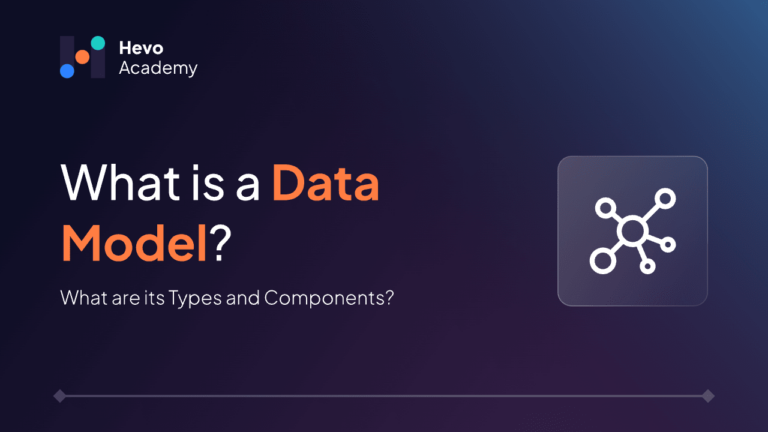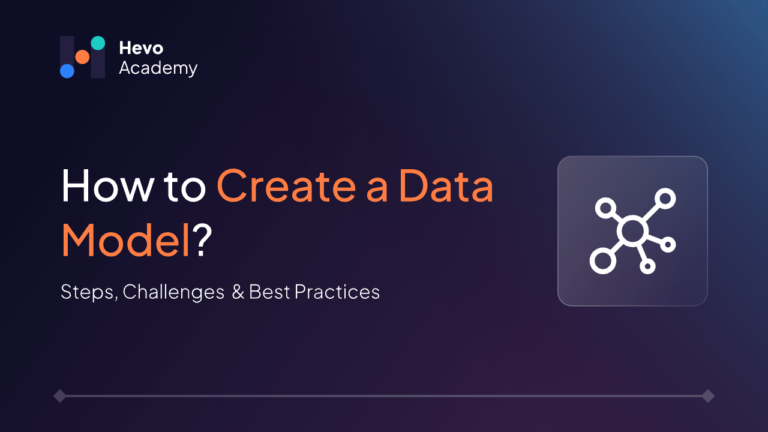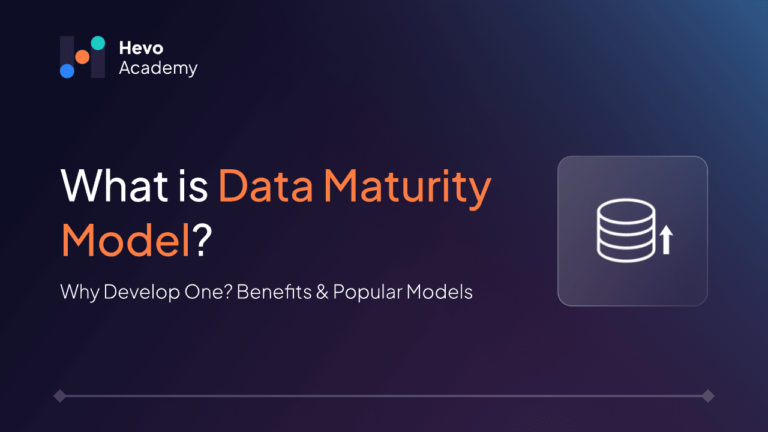Data without a Data model is ineffective. Data is indispensable, and gathering it is hard work. But without a structured approach, that data remains unusable. Data modeling provides this structured approach, transforming raw data into a coherent framework that aligns with business goals. With a well-structured model, business owners can access their data whenever they need to. In this blog, we’ll explore the core concepts of data modeling, the different types of models, and how they can help create a reliable framework for data management. We’ll also dive into the key components of a model and discuss real-world examples to illustrate its significance.
Table of Contents
What is a Data Model?
A data model is a framework of relationships within a database. It is a conceptual representation of data including the relationship and constraints that govern the data. Data architecture principles, such as scalability, consistency, and flexibility, guide the design of data models, ensuring they align with organizational needs and support long-term data integrity. It can be simple or complex and can be represented using various types such as:
- Conceptual data model
- Logical data model
- Physical data model
- Hierarchical and Network data models
Building and maintaining data pipelines can be technically challenging and time-consuming. With Hevo, you can easily set up and manage your pipelines without any coding. With its intuitive interface, you can get your pipelines up and running in minutes.
Key-Benefits of using Hevo:
- Real-time data ingestion
- No-code platform
- Pre and Post-load transformations
- Automated Schema Mapping.
Join over 2000+ customers across 45 countries who’ve streamlined their data operations with Hevo. Rated as 4.7 on Capterra, Hevo is the No.1 choice for modern data teams.
Get Started with Hevo for FreeThis framework is a critical component in data warehousing, as it provides the structure to support the decision-makers with their analytical needs. The data itself will be stored within this framework on a database. The business people must engage in the process by participating in facilitated sessions with the data architects. It is also an important tool for data analysis, database design, and system development. The real expense in a data warehouse project is not in the design of the model but rather in populating that model with data from the source systems.
Use of Data Model
Models ensures consistency in naming conventions, default values, semantics, and security while ensuring data quality. The model structure helps define the relational tables, primary and foreign keys, and stored procedures. It provides a clear picture of the base data and can be used by database developers to create a physical database. It helps in identifying missing and redundant data. This approach also establishes a ‘single source of truth’ for all systems, which is crucial for smooth operations and meeting compliance standards.
Components of Data Model
As mentioned in the IBM article on components of a Model, it consists of components that represent real-world data sources and the actual data they contain.
The following are the components:
- Data Sources: These components represent the real-world origins of data within your environment.
- Data Types: Data types refer to the categories of data stored within a data source.
- Data Items: These are individual units of data contained within a data source.
- Links: Links define the relationships between data types and data items within the model.
- Event Sources: Special data sources that represent applications responsible for storing and managing events.
Types of Data Model
We saw the types in the previous section. In this section, we will explore each type of model in detail and understand their use cases.
The types of models include:
- Conceptual data model – This model defines what the system contains. It is created by business stakeholders and data architects. The purpose is to organize scope and define business concepts and rules.
The conceptual model consists of:
- Entity – A real-world thing
- Attribute – Characteristics or properties of an entity.
- Relationship – Dependency or association between 2 entities.
As seen in the below figure, the focus is to represent data as a user will see it in the “real world”. It does not provide the technical details of the data. It presents the dependency or the connection between entities called Relationships (here, Sale).
- Logical data model—A logical model defines how the system should be implemented regardless of the database management system. This model is typically created by data architects and business analysts. Its purpose is to draw a technical map of rules and data structures. As shown in the figure below, the logical model gives a detailed description of each data entity. The attributes will have data types with exact precision and length.
- Physical data model – This model describes how the system will be implemented using a specific database management system. In the Physical model, along with the exact data types, lengths assigned, and default values, Primary and Foreign keys are also defined.
- Hierarchical and Network data model – It organizes the data in a tree-like structure, that is, in the form of a hierarchy. The Network model is the advanced version of the hierarchical model. To organize the data, it uses directed graphs instead of the tree structure. In this, the child node can have more than one parent. It uses the concept of the two data structures i.e. Records and Sets.
Conclusion
Businesses are only as good as the models that underpin their data in a world that is becoming more and more data-centric. The cornerstone of a successful digital business is data modeling. As this article has discussed, a robust model gives businesses a single source of truth, streamlines operations, and guarantees data integrity. To what extent does your present model help your company achieve its objectives? Could improving your data structure lead to more effective and efficient decision-making? The answers to these questions may open up new possibilities for your data management and use.
FAQs
What is meant by the data model?
A conceptual framework that arranges and specifies the connections between various data pieces in a database is called a data model. It guarantees that the data is organized to facilitate effective retrieval, storage, and usage for commercial objectives.
Is SQL a data model?
No, SQL (Structured Query Language) is not a data model. It is a programming language for managing and interacting with database data. An SQL database model, which includes elements like data sources, data types, and data items, describes how data is organized and retrieved in a relational database using SQL, even though SQL is not a data model in and of itself.
What are the 3 components of a data model?
A model consists of the following three essential parts:
– Data Items: Separate data points, such records or entries, that are contained within a source.
– Data Sources: The systems or sources, including databases or apps, from which data is gathered.
– Data Types: Types or categories of data (such as dates, strings, or numbers) that are kept in the sources.





